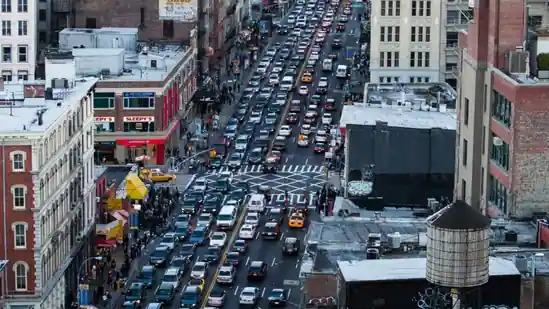
New York City is gearing up for a significant transformation as it prepares to launch its groundbreaking congestion pricing program in April 2024. Under this initiative, motorists driving into Manhattan south of 60th Street will be subject to tolls of up to $23. The revenue generated from these tolls will be allocated towards enhancing public transportation systems and creating a more pedestrian and cyclist-friendly environment within the city.
Supporters Embrace the Program’s Potential
Advocates of the congestion pricing program eagerly anticipate a myriad of positive outcomes. They believe the initiative will alleviate traffic congestion, enhance air quality, and make Manhattan more appealing to both residents and businesses. By discouraging private vehicle usage, supporters envision a cityscape that promotes sustainable transportation alternatives.
Opposing Views Highlight Concerns
While many endorse the congestion pricing program, there are dissenting voices that raise valid concerns. Detractors argue that the tolls will disproportionately burden drivers and negatively impact the city’s economy. These critics contend that the initiative may not effectively address traffic congestion.
A Milestone in American Urban Planning
As the first congestion pricing program in the United States, this initiative has garnered praise from environmental groups and transportation advocates. These proponents assert that such a measure is a crucial step toward reducing traffic congestion and improving air quality in densely populated urban areas. The New York City Council and state legislature have also lent their support to the program.
Navigating the Complexities
However, the program is not without its complexities and controversies. Some drivers and business groups have expressed reservations, contending that the tolls unfairly burden drivers and may impede economic growth. Furthermore, skeptics argue that the program’s efficacy in reducing traffic congestion is questionable, as drivers may opt for alternative transportation modes like taxis or ride-hailing services.
Weighing the Potential Benefits
Congestion pricing holds the promise of numerous advantages:
- Reduced Traffic Congestion: By increasing the cost of driving into Manhattan, congestion pricing incentivizes the use of public transportation, walking, and cycling, ultimately alleviating traffic congestion.
- Improved Air Quality: Fewer cars on the road lead to a decrease in harmful emissions like nitrogen oxides and particulate matter, resulting in improved air quality.
- Enhanced Livability and Economic Growth: A more attractive Manhattan can emerge through congestion pricing, fostering livability, sustainability, and economic vitality, potentially attracting a larger population and increased economic activity.
Considering the Potential Drawbacks
It is essential to acknowledge the potential drawbacks associated with congestion pricing:
- Perceived Unfairness: Some drivers may perceive the tolls as unjust, particularly if they rely on driving into Manhattan for work or essential activities.
- Potential Economic Impact: Certain businesses might experience adverse effects from congestion pricing, as it may pose challenges in attracting customers and employees.
- Effectiveness in Reducing Congestion: Skeptics argue that drivers may seek alternative means of accessing Manhattan, such as taking cabs or ride-hailing services, diminishing the program’s impact on reducing traffic congestion.
The congestion pricing program presents a multifaceted issue, with benefits and drawbacks to carefully consider. It is imperative to weigh these aspects thoughtfully and make informed decisions regarding support for the program.
**Thank you for reading, and stay tuned as Manhattan embarks
